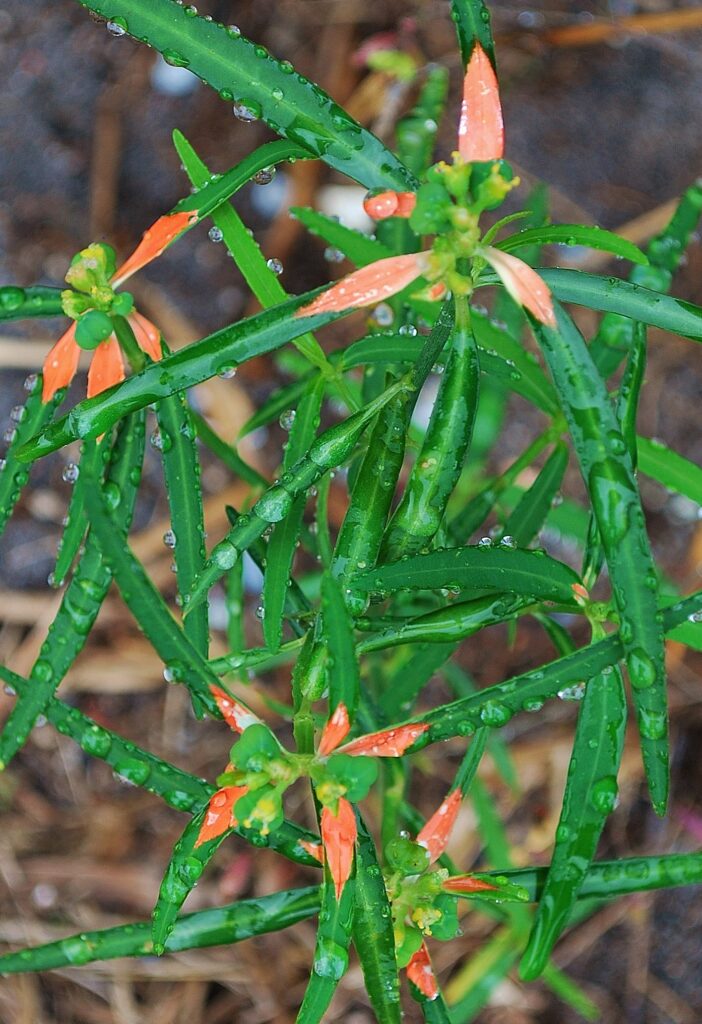One of my fond memories of college was the summer I spent at Loop’s Nurseries and Greenhouses in Jacksonville as an intern. Though the work was hard, not to mention good for me, I learned a great deal about the effort and knowledge that goes into producing gorgeous plants for sale. Before returning to Gainesville for the fall term, the final project at the nursery was taking the cuttings for that year’s crop of poinsettias. That hot, sweaty, filthy, and sticky job in August yielded beautiful pots of massive, gorgeous red, white, and pink high-quality poinsettias for the holidays, but poinsettias are wild, too.

Years later, I still love poinsettias. They are versatile, cold-sensitive tropical plants, originally from Mexico, that are beautiful as landscape shrubs and in containers. Poinsettias are the best-selling flowering potted plants in the United States and are grown commercially as a holiday crop in all 50 states. However, I have also come to appreciate the native, more subtle wild poinsettia.
Euphorbia cyathophora, also known as Wild Poinsettia, Painted Spurge, Painted Leaf, or Fire on the Mountain, is native to the eastern and southern US, south to northern South America, and east to the West Indies. It is an annual or perennial, depending on habitat. The leaves are alternate on the stems, variable, and usually somewhat fiddle- or lance-shaped, 5 to 6 inches long, bright green, and glossy. The true flowers are the small, yellow cup-shaped structures at the ends of hollow, green stems. Below the tiny flowers are bracts or modified leaves, which turn red, pink, or orange-red on a portion of the bract.
Wild poinsettia is classified in the same family as the popular holiday plant Euphorbiaceae. The large (over 7,000 species) family has plants that produce milky sap from cut stems. The milky juice can cause skin irritation in some people and pets through the plant. The traditional holiday poinsettias are not deadly poisonous but can cause some distress if ingested.
Use wild poinsettia as a wildflower in native landscapes, beds, and containers. It is also lovely as a filler plant in more traditional landscapes, growing 24 to 36 inches high and 10 to 18 inches wide. Tolerant of most well-drained soil, this dainty native plant prefers full sun or partially shady conditions. Plant this wildflower by seed which may be challenging to find.
The colorful bracts of wild poinsettia appear late in the summer or early fall and persist into winter and the holiday season. Though the bracts are pretty, their coloring is much more subdued than florist poinsettias.
This column first appeared in the Treasure Coast Newspapers.
Leave a Reply